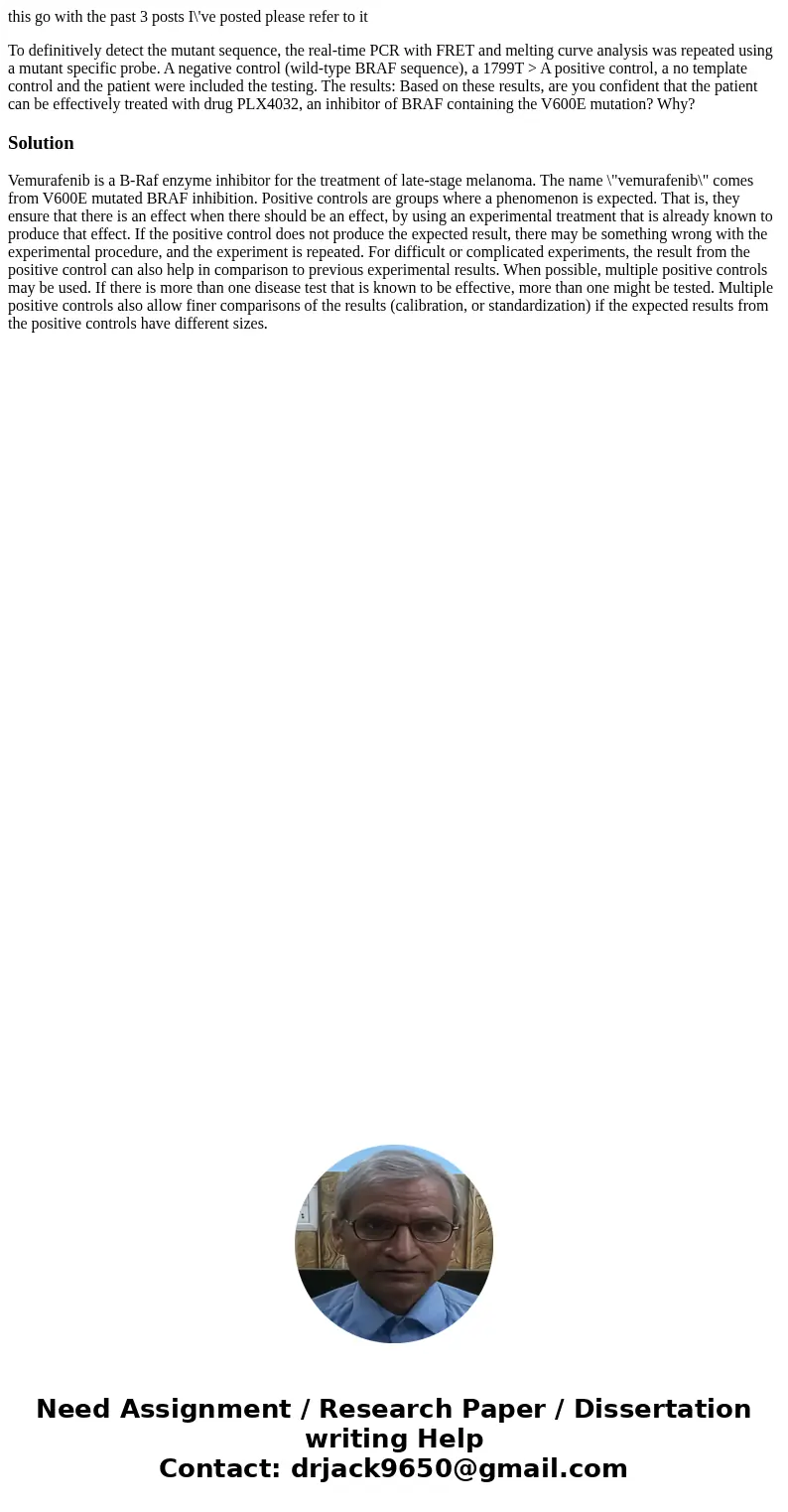this go with the past 3 posts Ive posted please refer to it
this go with the past 3 posts I\'ve posted please refer to it
To definitively detect the mutant sequence, the real-time PCR with FRET and melting curve analysis was repeated using a mutant specific probe. A negative control (wild-type BRAF sequence), a 1799T > A positive control, a no template control and the patient were included the testing. The results: Based on these results, are you confident that the patient can be effectively treated with drug PLX4032, an inhibitor of BRAF containing the V600E mutation? Why?Solution
Vemurafenib is a B-Raf enzyme inhibitor for the treatment of late-stage melanoma. The name \"vemurafenib\" comes from V600E mutated BRAF inhibition. Positive controls are groups where a phenomenon is expected. That is, they ensure that there is an effect when there should be an effect, by using an experimental treatment that is already known to produce that effect. If the positive control does not produce the expected result, there may be something wrong with the experimental procedure, and the experiment is repeated. For difficult or complicated experiments, the result from the positive control can also help in comparison to previous experimental results. When possible, multiple positive controls may be used. If there is more than one disease test that is known to be effective, more than one might be tested. Multiple positive controls also allow finer comparisons of the results (calibration, or standardization) if the expected results from the positive controls have different sizes.

 Homework Sourse
Homework Sourse